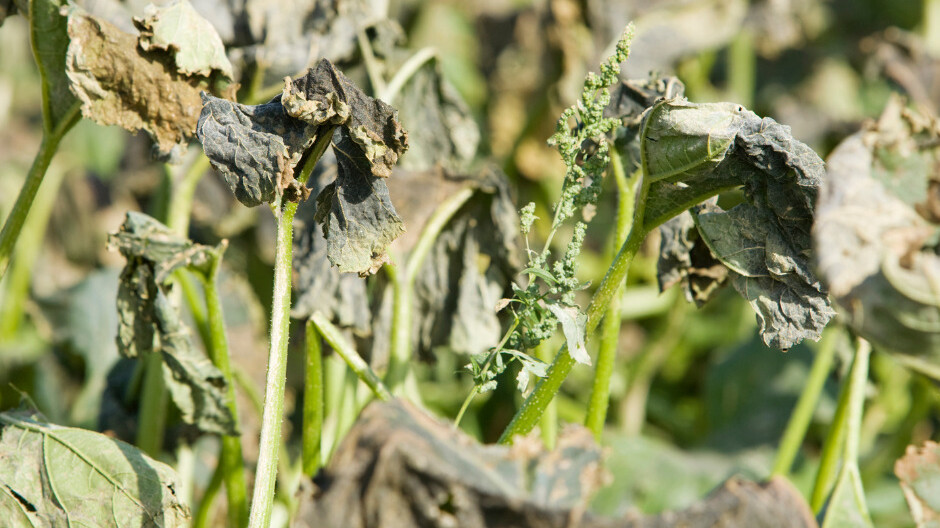Hydroponic farming is one of the biggest trends in home gardening. But where this growing method is really making waves is in industrial agriculture. Ben Naumann of the Conservation Institute evaluates its strengths and weaknesses.
In recent years, Australia has positioned itself as one of the world’s leading hydroponic produce growers. This feat is made even more impressive by the fact many of our hydroponic facilities are located in some of the most arid parts of Australia, with one of the country’s largest greenhouses operating in the Southern Australian desert.
 Growing fresh tomatoes in the harsh desert, using only seawater and sunlight, is an incredible achievement no matter the scale. So, when this growing method also promises to end world hunger and slow down the drain of natural resources, it’s no surprise that hydroponic farming has gained such a following.
Growing fresh tomatoes in the harsh desert, using only seawater and sunlight, is an incredible achievement no matter the scale. So, when this growing method also promises to end world hunger and slow down the drain of natural resources, it’s no surprise that hydroponic farming has gained such a following.
But is hydroponic farming really as perfect as it seems? And what might stand in the way of hydroponics paving the way for a more sustainable future?
Hydroponics for the Home Gardener
Hydroponic techniques are also becoming increasingly popular in the home gardening world. Today, almost anyone can visit their local hardware store and walk out with the materials for a D.I.Y. hydroponics setup in hand.
For ornamental gardeners — those who spend their weekends tending to rose bushes and hydrangea shrubs — hydroponic gardening doesn’t offer too much appeal. But for those growing vegetables, herbs, and leafy greens, hydroponics can feel like the answer to healthier and more prolific harvests as shown in the banner image to this article.
On top of elaborate outdoor setups that promise endless salads filled with lettuce and tomatoes, space-conscious gardeners can also grow small batches of hydroponic herbs in their flats.
At-home hydroponic systems, no matter their size, are an exciting advance for the gardening hobby as a whole. However, when it comes to the global impact of hydroponic technology and growing techniques, large-scale farming is the industry to watch.
The Realities of Hydroponic Growing
Most home gardeners are attracted to hydroponic growing because of its novelty, efficiency, or minimal space requirements. On such a small scale, this is pretty much where the benefits of hydroponics end. When you expand this system to an industrial scale, though, it has the potential to change how we grow the food sitting on our supermarket shelves.
Pros
Most sources choose to focus on the benefits of hydroponic farming, and for good reason. After all, according to the Conservation Institute, hydroponic farming can produce up to three or four times more produce than traditional methods (using the same or even less growing space). Not only does it use less growing space, but it also uses fewer resources. By using fewer resources, like water, fertiliser, or pesticides, less harmful pollutants are released into the atmosphere, or, even worse, into the ground. Ground water contamination has a negative impact on things like drinking water supply, soil health, and the health of the nearby ecosystem. By incorporating hydroponic farms and gardens, we can reduce some of these effects.
And that’s only a few of the potential benefits offered by hydroponic growing methods. Here are some others:
- Hydroponic produce grows faster than soil-grown produce
- Farms utilizing hydroponics use up to 90 percent less water
- Hydroponic farms use up to 75 percent less fertiliser
- Hydroponics makes farming in urban areas possible
- Hydroponic produce requires fewer pesticides and herbicides
Cons
Although it’s tempting to position hydroponic farming as the utopian solution to dwindling resources and a growing world population, nothing is perfect. Perhaps the largest drawback for Hydroponics is the excessive amount of energy it requires for indoor operations (like vertical farming).
Certain set-ups, like the project in the Southern Australian Desert, or at-home hydroponic rigs, have the luxury of extra space to add things like solar panels or even direct sunlight for their plants. Vertical farms, multi-level farming structures set up inside of tall and thin urban buildings, don’t have this luxury. Therefore, the energy required to grow fleshy plants like tomatoes or sweet corn can often exceed 1200 kilowatt-hours of electricity for one kilogram of food. For reference, that’s about the annual energy consumption of the average refrigerator for a relatively small amount of produce.
Some additional pressing concerns about hydroponic farming and its consequences include:
- Hydroponics systems have extremely high start-up costs
- Farming hydroponically can still contaminate groundwater if the nutrient solution is improperly disposed of
- Hydroponic produce costs more for consumers
- Hydroponic produce can be diseased if pests or other foreign entities infect the system water supply
- Hydroponics systems may compete with organic growing methods
The Dispute With Organic Farmers
Hydroponic farming isn’t the first new agricultural fad and it certainly won’t be the last. Organic farming gained popularity around the same time and provides many of the same benefits. However, disputes between these two have begun after Hydroponic farming companies began labeling their products as “organic”. There are around 200 Hydroponic Farms in the U.S. that are organically certified, and this number may rise due to the premium on organic products. This has provoked some competition between the two.
Both sides of the argument claim their products are better. “Organic farming allows the use of manure as a natural fertilizer. This has caused a recurring health problem due to E. coli and salmonella outbreaks. Hydroponic growers have completely eliminated the need for soil and its microorganisms” says EZ Gro, a hydroponic supplier. However, Mayo Clinic claims Organics are healthier and provide more flavor, stating “Studies have shown small to moderate increases in some nutrients in organic produce. The best evidence of a significant increase is in certain types of flavonoids, which have antioxidant properties”. The jury is still out on both of these methods, but if you are looking for any type of produce that is a step up from traditional farming, you can’t go wrong with either.
Looking to the Future
Maybe hydroponic farming is the answer to impending world hunger and agricultural sustainability. At this time, though, even the experts aren’t quite sure what’s in store for the future of food production. While there are valid criticisms of hydroponic farming (most notably its high energy consumption), some industry leaders have taken proactive steps to increase sustainability.
For example, Port Augusta’s Sundrop Farms relies on solar power to operate its expansive hydroponic greenhouses. By relying on renewable solar energy, this hydroponic farm has completely avoided the issue of high energy consumption.
The only way to further improve our understanding of hydroponic and other sustainable agriculture methods and their potential is to invest time, research, and money into these endeavors. Without these investments, new and more efficient sustainable agriculture technology will never emerge.
At the end of the day, hydroponic farming may not become the be-all, end-all of sustainable agriculture. But it could definitely be a major piece of the puzzle.
Related Articles:
Thriving in the Heat: Managing Plant Heat Stress
As the mercury rises, your garden confronts the challenge of heat stress. Understanding how various plants respond to heat and employing appropriate…
Garden Journaling – Slow down to tune in.
As we move through the year and our gardens evolve, there's something magical about documenting the journey. Garden journaling is an art that enables…




